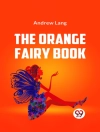Victor Hugo’s ‘The Hunchback of Notre Dame’ is an evocative exploration of love, isolation, and the complexities of societal judgment, set against the backdrop of 15th-century Paris. The narrative is rich in descriptive detail, combining gothic elements with profound psychological depth, as it navigates the intertwining lives of its unforgettable characters—most notably, the disfigured bell-ringer Quasimodo and the exquisite Esmeralda. Hugo masterfully captures the architectural grandeur of Notre Dame itself, employing it as a symbol of human aspiration and the tragic consequences of social estrangement. Victor Hugo, a leading figure in the Romantic movement, drew upon his deep empathy for the marginalized and oppressed to craft this timeless tale. His own experiences of political exile, as well as his keen interest in the plight of the poor and the downcast in society, profoundly influenced his writing. By examining themes of beauty and monstrosity, Hugo invites readers to reflect on their own judgments of others, a significant ethos that shaped his literary career. I highly recommend ‘The Hunchback of Notre Dame (Illustrated)’ not only for its intricate storytelling and stunning illustrations but also for its rich themes that resonate across the ages. This book serves as an essential reminder of the complexities of human existence and the powerful forces of empathy and compassion.
Over de auteur
Victor Hugo (1802–1885) stands as one of the towering figures in world literature—an illustrious French poet, novelist, and playwright who masterfully captured the political and social upheavals of his time. Born in Besançon, France, Hugo quickly emerged as a leader of the Romantic literary movement with early works such as ‘Cromwell’ (1827) and ‘Hernani’ (1830). His novel, ‘The Hunchback of Notre Dame’ (1831), with its evocative portrayal of medieval Paris and its poignant character studies, cemented his fame. Illustrated editions of the text have further enriched its legacy, allowing readers to visualize the world Hugo vividly created. Hugo’s literary style is characterized by richly detailed settings, deep psychological insight, and a penchant for exploring themes of existentialism, justice, and the human spirit. Later, his magnum opus, ‘Les Misérables’ (1862), would further solidify his place in literary history through its epic scope and profound empathy. Hugo’s works exhibit not just his narrative prowess but also his profound humanitarian convictions. An advocate for social causes like the abolition of the death penalty, Hugo’s literature often reflects his beliefs and activism. Even in his exile from France due to his political stances, he continued to write works that resonated powerfully with his contemporaries and generations to come. Today, Hugo’s legacy is celebrated for his contribution to literature and the depth of his humanity.












